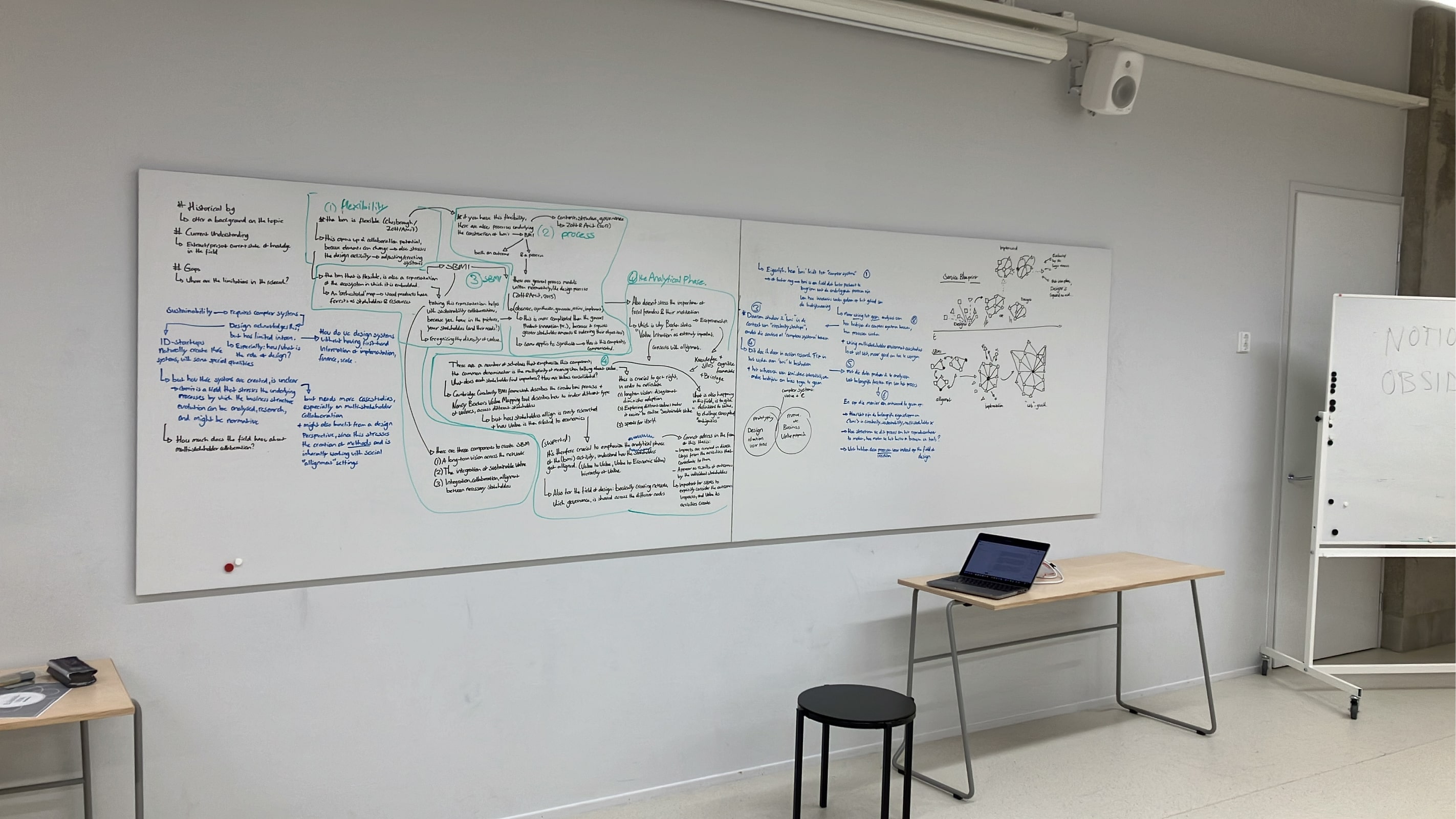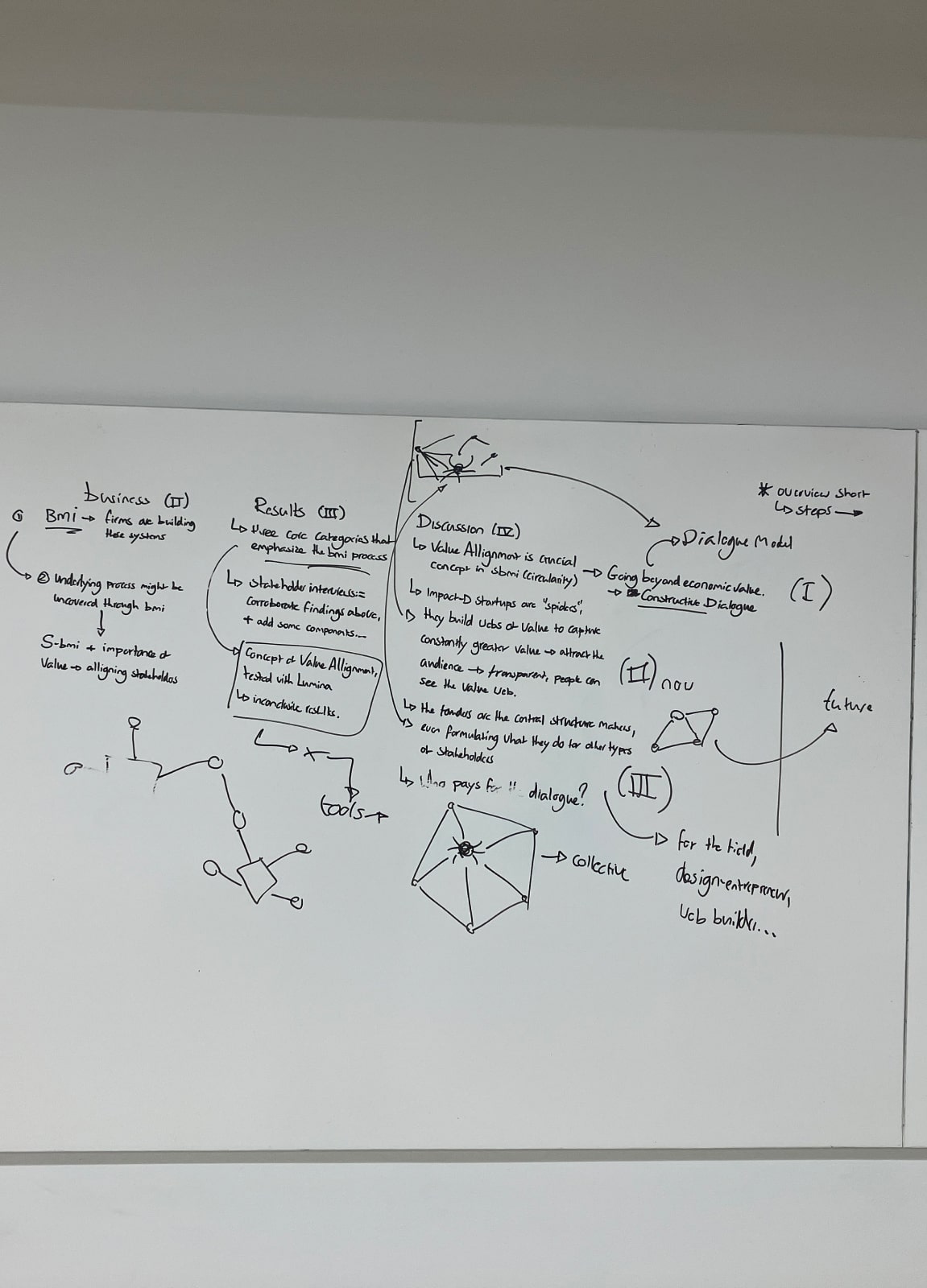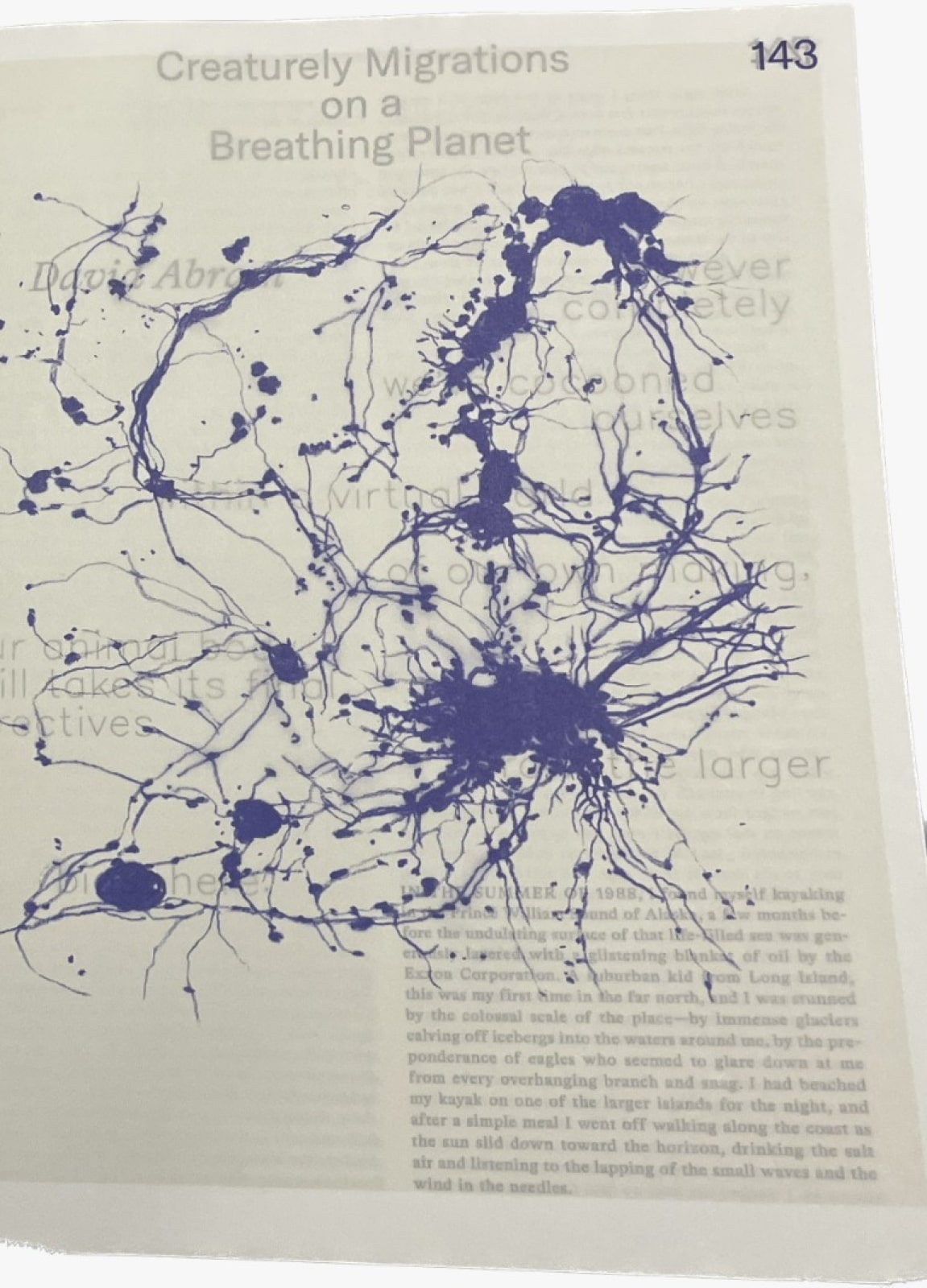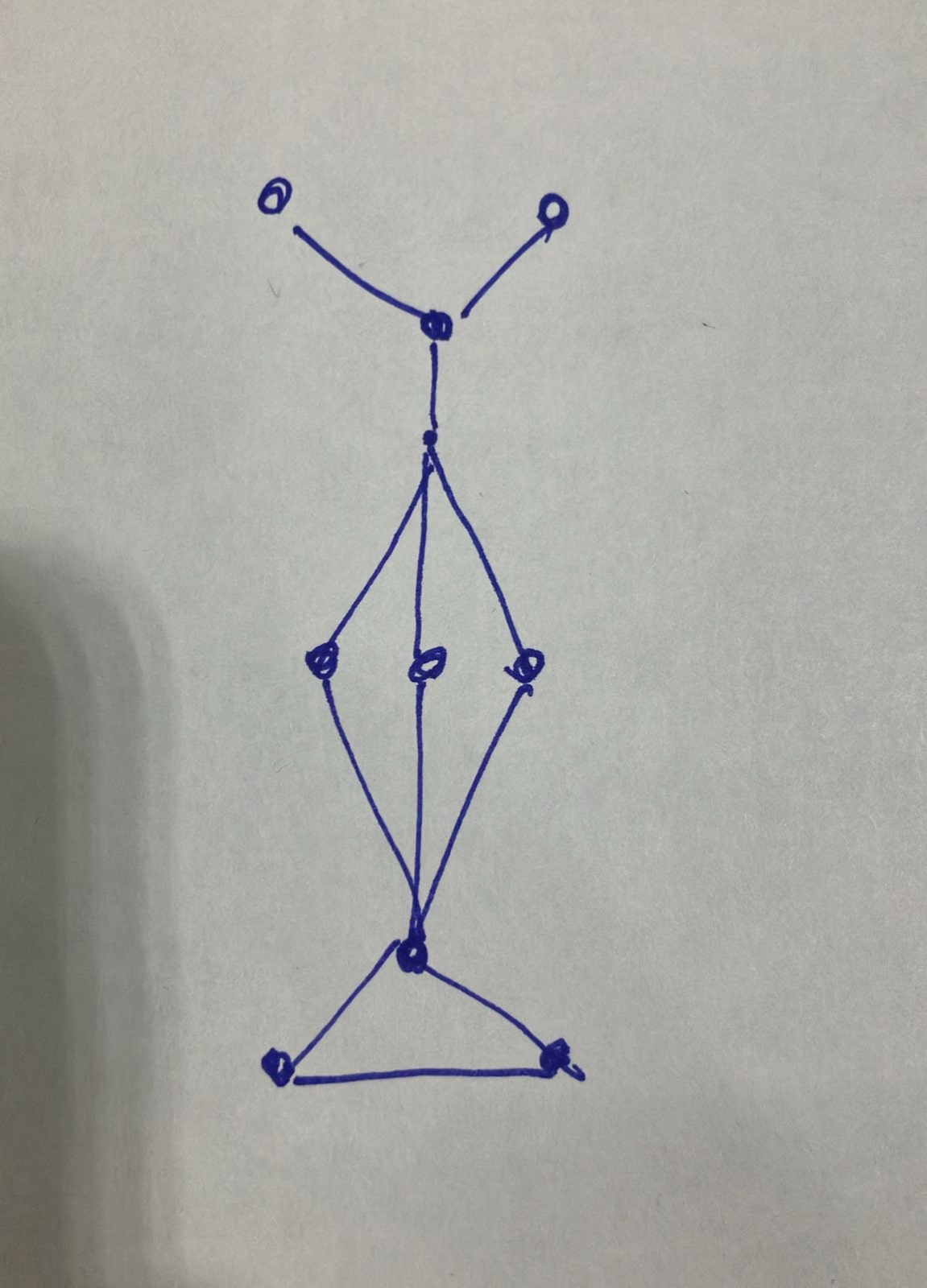Systems Weaving
In my Master Thesis, I challenged myself to investigate a tension I observed: designers are increasingly tasked with solving complex problems, but struggle to or rarely implement what they come-up with. Why is that?
| ID: | #019.23 |
| Status: | Completed |
| Client: | Self-initiated |
| Year: | 2023 |
| Collab: | Supervision by Nuria solsona caba and Taija Turunen |
| Discover: | Aalto Doc |
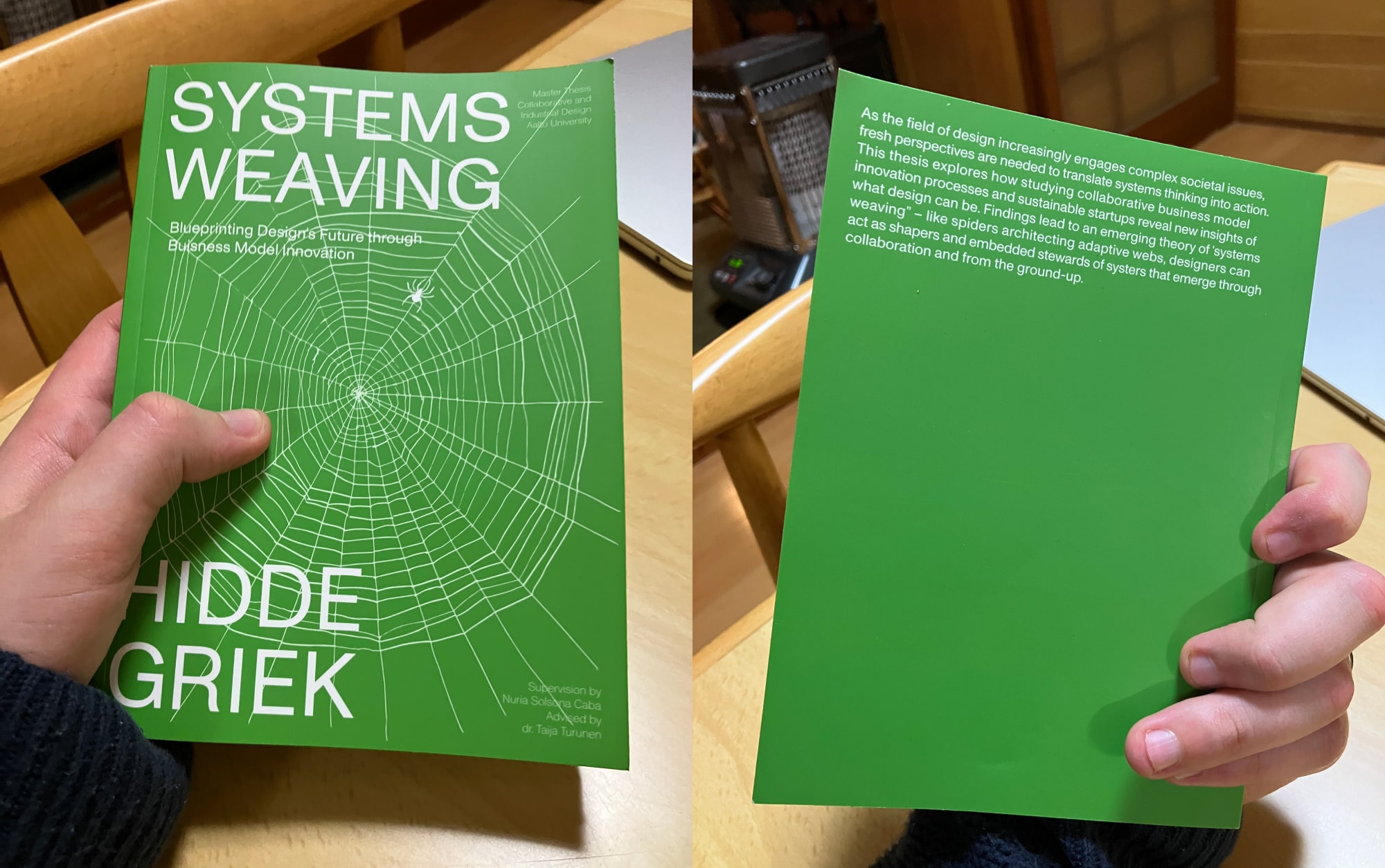
Challenge
How can designers evolve from traditional design roles into ones that allow them to tackle the complexity of modern societal "design problems"?
Design isn't just in the arts anymore; it's in everything - business, healthcare, government, and more. Designers are often seen as modern-day magicians, conjuring up solutions out of seemingly thin air. But here's the thing - the problems we designers face now are complex. They’re dynamic, interconnected, and challenging.
Designers find themselves spending more time understanding these problems than solving them. Take a stroll through a design college, and you'll see numerous students bask in the white glow of Miro boards. A common response to complex problem is using 'systems thinking', without acknowledging that systems are necessarily simplicifications of reality.
Breaking down dynamic problems endlessly can lead to analysis paralysis, where it becomes tough to move from understanding the present (A) to creating a future (B). But it's precisely this double-act of understanding (A) and creating a future (B) that we call an act of “design”. How do we tackle problems as designers that are as dynamic, interconnected and complex as climate change - that feel too large and slippery?
Designers find themselves spending more time understanding these problems than solving them. Take a stroll through a design college, and you'll see numerous students bask in the white glow of Miro boards. A common response to complex problem is using 'systems thinking', without acknowledging that systems are necessarily simplicifications of reality.
Breaking down dynamic problems endlessly can lead to analysis paralysis, where it becomes tough to move from understanding the present (A) to creating a future (B). But it's precisely this double-act of understanding (A) and creating a future (B) that we call an act of “design”. How do we tackle problems as designers that are as dynamic, interconnected and complex as climate change - that feel too large and slippery?



Approach
Merging grounded theory with a critical examination of design's current state to reinvent its role in society.
Action Research
My thesis approach began with an embedded action research within a circular startup undergoing the development of a shared business model with four other companies. This phase involved firsthand experience in collaborative systems change, supported by grounded theory methodology. Simultaneously, semi-structured interviews and extensive literature integration were conducted, offering a multi-perspective view on sustainable business model innovation (SBMI) and its intersection with design.
Synthesizing the current state of Design
Parallel to the action research, I engaged in a systematic collection and synthesis of critiques within contemporary design. This analysis highlighted prevalent issues such as analysis paralysis and the challenges in implementing systemic solutions. This critical evaluation provided a foundational narrative to explore new opportunities in design thinking and practice.
Business Model Design as a new angle for Design
Recognizing the limitations in current design approaches, the focus expanded to business model design. Here, the synthesized challenges of design were examined through the lens of business, particularly looking at how impact-driven entrepreneurs implement and grow their solutions - very much likened to the way of what the field of Design tries to achieve. This exploration aimed to identify novel methodologies and practices that could be translated back into the field of design.
Reframing the role of designers as Systems Weavers:
The culmination of this research was the conceptual shift in the role of designers. Impact-driven entrepreneurs, effectively implementing and scaling their visions, were studied as exemplars of a new breed of design leaders. This reframing positioned designers not just as creators of objects but as architects of dynamic, scalable systems, adept at navigating and impacting complex societal challenges.
Outcome & Impact
Through a deep dive into the organisational landscape and close collaboration we co-designed the Compass
Shift in Design Perspective
The thesis culminated in a transformative concept: leaders in fields like sustainable business model innovation are, in essence, designers of futures. They craft not just products but holistic, dynamic systems that adapt and grow, mirroring the complex problems they aim to solve. This reevaluation redefines the role of designers as 'systems weavers', who integrate stakeholders, demands, and objectives into scalable, impactful solutions.
Recognition
The thesis was awarded the highest grade, and with great praise for its visionary perspective (my academic supervisors made me very happy 😉), academic rigor but also the relevance and urgency of reimagining design roles in contemporary society.
The impact of this design thesis extended beyond academia, resonating with a wider audience. It garnered significant traction on LinkedIn, with over 20,000 views and counting, and achieved considerable reach through hundreds of downloads and tens of sales of paperback versions.
Personally, I hope that the insights and methodologies outlined in the thesis offer preliminary steps for designers and organizations to navigate and address twenty-first-century systemic challenges in a new way. By advocating for a shift to 'systems weaving', the thesis lays the groundwork for developing more integrative, impactful design approaches, potentially influencing how future designers are trained and how design is applied in various sectors.
Reflection
Writing 'Systems Weaving' led to 200 pages of dense design theory, and is too date my most expansive body of work.
Writing 'Systems Weaving' over the course of a year resulted in a substantial 200-page thesis, my longest piece of writing to date. This intensive process not only honed my skills in design and analysis but also ignited a passion for exploring the intersections of design, philosophy, and business design. It deepened my understanding of the complexities inherent in modern design challenges and reinforced the importance (and most importantly value) of interdisciplinary approaches. Looking ahead, I am eager to delve further into this, hoping to continue to contribute more to the evolving landscape of design thinking and practice.
